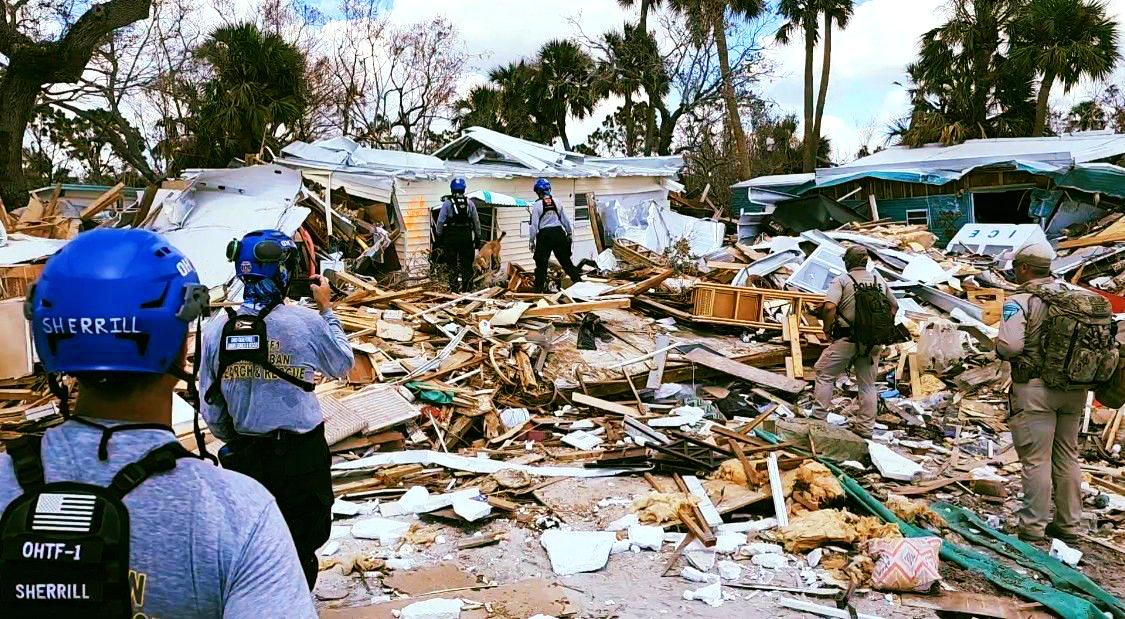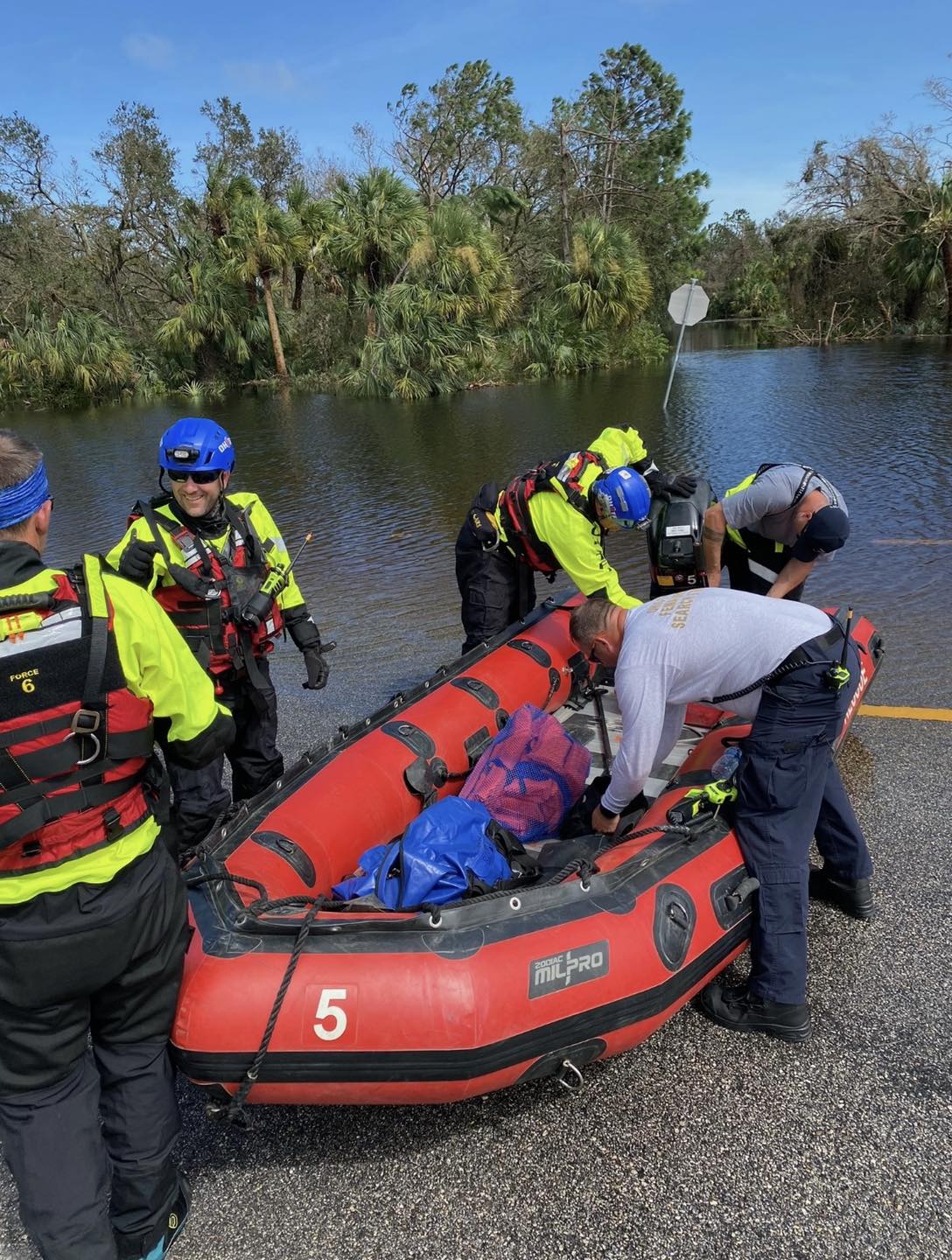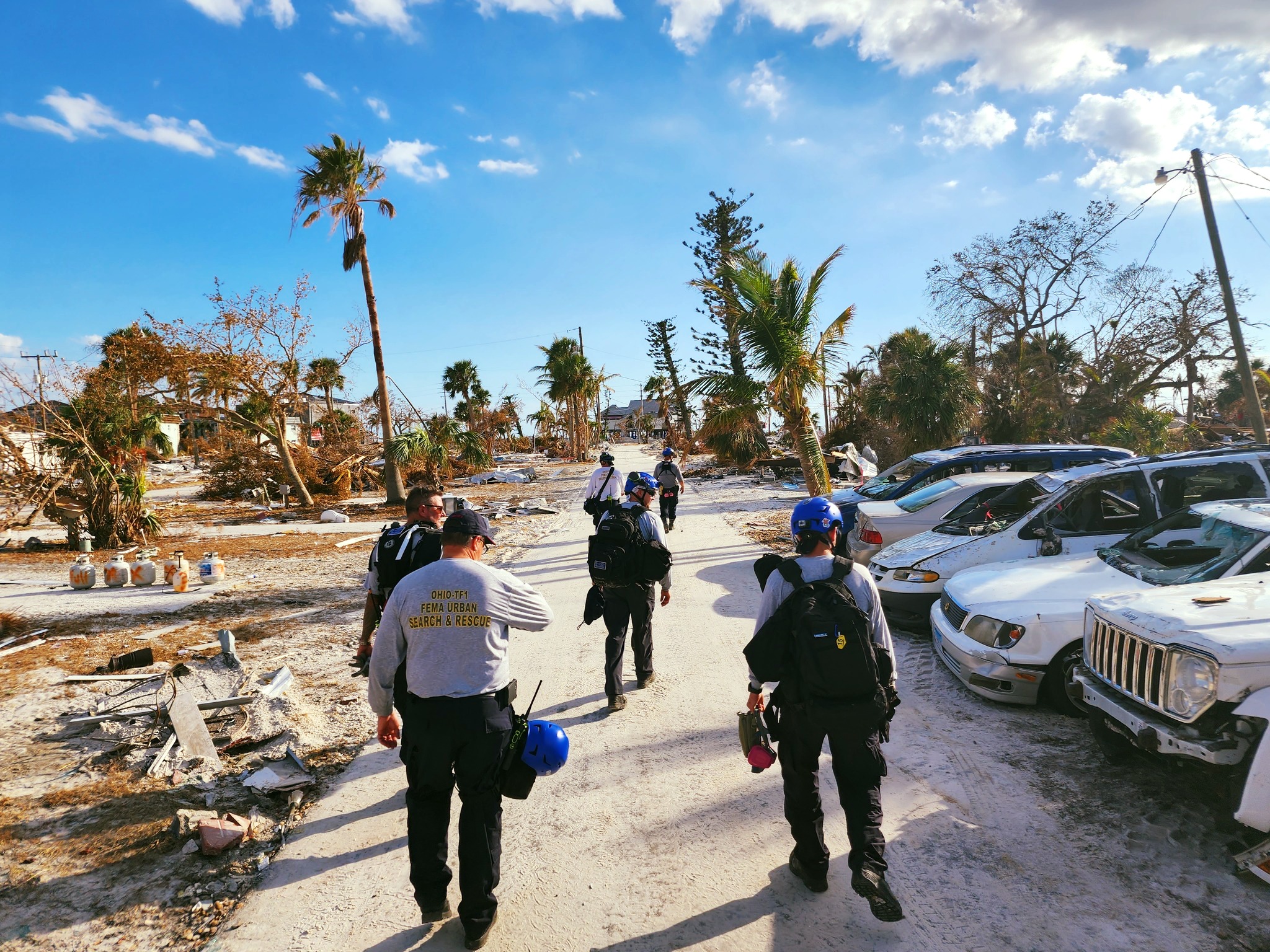Boots on the Ground—Ohio-Task Force 1 Trusts Their Training
As Hurricane Ian was approaching Florida’s west coast, Ohio-Task Force 1 was ready and waiting.
Considered the deadliest hurricane to hit Florida since 1935, Hurricane Ian made landfall on September 28, 2022. Search and Rescue teams from around the country were deployed to the area, and OH-TF1 was among the first to arrive.
What is Ohio-Task Force 1 (OH-TF1)?
OH-TF1 is one of 28 Urban Search and Rescue task forces managed by the Federal Emergency Management Agency (FEMA). Since OH-TF1 became deployable in April 1998, they have responded to dozens of catastrophic events, including the 9/11 World Trade Center attacks, the Columbia Shuttle debris recovery, Hurricane Katrina, the Moore, OK tornado, and the deadly flooding in Southeastern Kentucky. With approximately 215 members and six teams comprised of 20 skilled deployment specialists, OH-TF1 personnel is trained and equipped to respond to terrorist attacks, natural disasters, and man-made disasters that threaten the safety and security of our communities.
Disaster Response
The team was pre-deployed and staged in Alabama prior to Hurricane Ian’s landfall in order to begin search and rescue efforts immediately. Throughout their deployment, they assisted in various locations along Florida’s west coast, initially in Sarasota County and eventually moving into Lee County. Mission requirements and response priorities changed daily throughout the deployment as the FEMA incident support team worked with local agencies to determine their needs. OH-TF1 specialists could then be dispatched where needed.
One unwavering priority of OH-TF1 is the safety of the team and the folks they are there to help. Many days involved wide-area searches and data collection. Wide-area searches were conducted from vehicles, boats, and on foot. When searching a debris field, OH-TF1 specialists used saws, forcible entry tools, and heavy equipment for larger debris field areas, always keeping medical gear close at hand. The team also spent days searching debris fields with cameras and search-K9 resources. Data was gathered through an application on phones and tablets, which is updated in real-time, allowing governments to track damage, needs, flooding, and evacuations.
As of 2020, at least one member of OH-TF1 has been part of a deployment to 22 hurricane-related disasters. The team knows that early on in a hurricane deployment, there is a lot of moving, and they are rarely in the same place for more than one night. Eventually, the team set up a base camp in Lee County, Florida, and raised shelters for sleep, supported by shower and restroom trailers. Days began early, between 5 and 6 am, for a quick breakfast and a briefing on the day's mission. Breakfast was followed by gear checks and preparation to move out in convoy to the designated area of operation.
There is a good reason the team has a saying, “Don’t grow roots”; staying flexible and mobile is critical in these dynamic events. OH-TF1 continually works to improve the efficiency of operations. OH-TF1 has now deployed five times in 18 months, which offers plenty of data to review so deployment and mission procedures can continue to be refined.
The Challenges and Rewards
The team indicated one of the most significant challenges facing their response was increased vehicle traffic to the area, which significantly decreased maneuverability. OH-TF1 deploys in convoy, which includes semi-trucks, box trucks, a bus, vans, pickups, and SUVs. As a completely self-sufficient entity, OH-TF1 does not require any logistical support from the area affected by the disaster. Though this additional equipment lightens the load on local jurisdictions, in places that suffered significant storm-surge destruction, such as Fort Meyers beach, traffic congestion made the response more challenging.
Despite the hundreds of unpaid training hours, long days on deployment, challenging conditions, and emotional toll, I would be surprised to find a single member of OH-TF1 that would complain. One member comments, “People are always amazed to find out we’ve traveled from Ohio to come to help out in south Florida. They’re always thankful and appreciative. Interaction with the public is always the best part; even if it’s just sharing a bottle of water, it’s what we’re there for.”
To find out more about Ohio-Task Force 1 structure, membership, and deployment history, check out their website at www.ohtf1.com.





